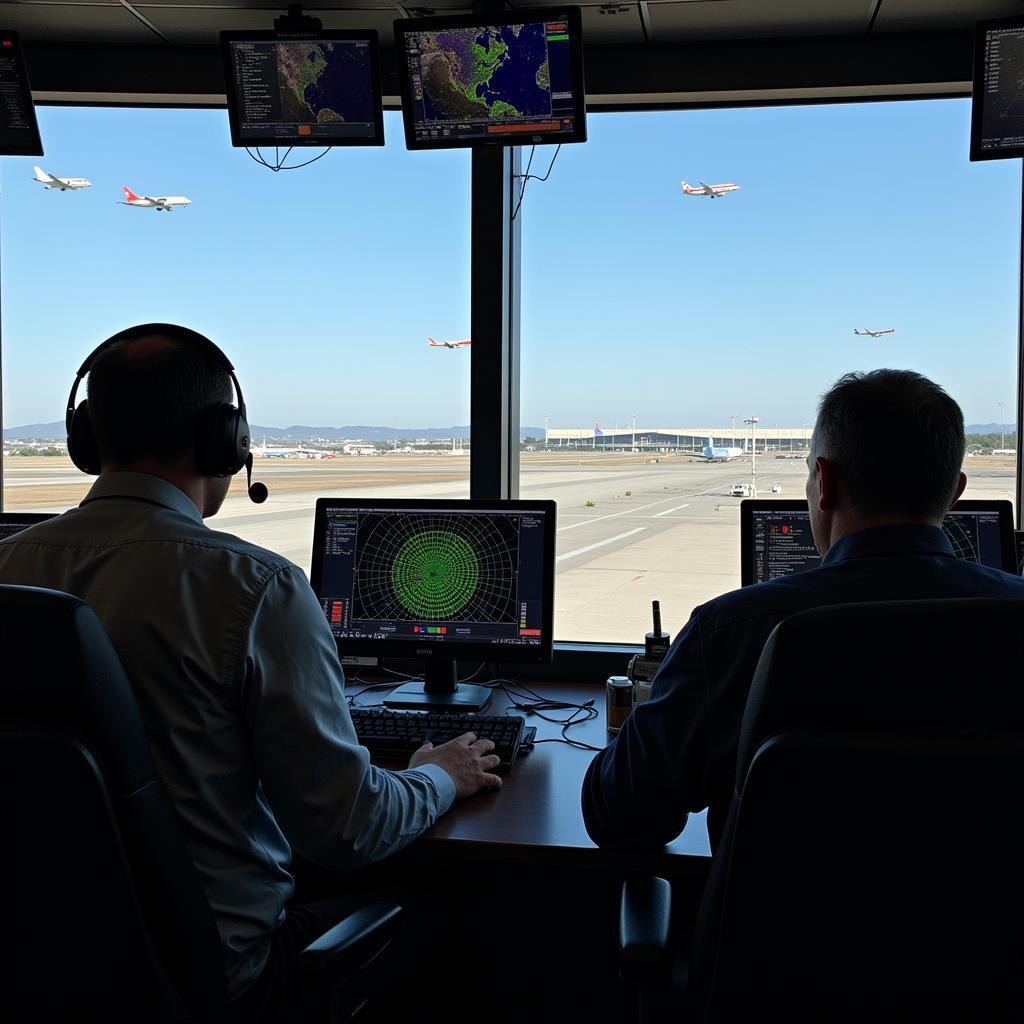Navigating the world of airports can be confusing, especially with terminology like “Nav Airport.” This article will explore what “NAV airport” likely refers to – the crucial role of navigation in airport operations and the various navigational aids used to ensure safe and efficient air travel.
Navigation is the backbone of safe and efficient airport operations. From the moment an aircraft takes off until it lands, navigation systems guide pilots, air traffic controllers, and ground crews, ensuring smooth transitions between phases of flight. Understanding the different aspects of airport navigation is crucial for anyone involved in aviation or simply curious about how airports work. This encompasses various technologies and procedures, all working in concert to ensure safe and efficient air travel.
The Importance of Navigation at Airports
Airports are complex environments with numerous aircraft movements, ground vehicles, and personnel operating simultaneously. Effective navigation is essential for coordinating these activities and preventing collisions. Precise navigation also helps optimize aircraft routing, minimizing taxi times and fuel consumption. Furthermore, accurate navigation ensures that aircraft follow designated flight paths, reducing noise pollution for surrounding communities. One example can be seen at navi mumbai international airport opening date.
 Airport Navigation Systems in Action
Airport Navigation Systems in Action
How Does Airport Navigation Work?
Airport navigation relies on a combination of ground-based and satellite-based systems. Ground-based systems include instrument landing systems (ILS), which provide precise guidance during approach and landing, and VHF very high frequency omnidirectional range (VOR) stations, which help aircraft navigate en route. Satellite-based systems, such as the Global Positioning System (GPS), offer worldwide coverage and increased accuracy. These systems work together to provide pilots with a complete picture of their position and the surrounding airspace. Understanding the complexities of these systems is key to appreciating the sophistication of modern aviation, much like understanding the infrastructure of navi mumbai airport.
Navigational Aids at Airports
Airports utilize a variety of navigational aids to support safe and efficient operations. These aids provide pilots with the information they need to navigate safely on the ground and in the air. Some key navigational aids include:
- VOR: Provides bearing information to aircraft, allowing pilots to determine their position relative to the station.
- DME: Distance Measuring Equipment (DME) tells pilots their exact distance from a DME station.
- ILS: Provides precise guidance during the approach and landing phases of flight, especially in low-visibility conditions.
- GPS: A satellite-based navigation system providing global coverage.
- Airport Surface Detection Equipment (ASDE): A radar system used by air traffic controllers to track aircraft and vehicles on the airport surface. This is particularly important in low-visibility conditions. Similar technology can be found in relation to ndls to airport metro.
Future of Airport Navigation
The future of airport navigation will likely involve increased automation and integration of various systems. NextGen, the Federal Aviation Administration’s (FAA) modernization program, aims to improve efficiency and safety through advanced technologies like data communications and improved surveillance capabilities. This will allow for more precise aircraft tracking and optimized flight paths. Furthermore, the development of autonomous aircraft will require even more sophisticated navigation systems, capable of handling complex maneuvers and responding to changing conditions without human intervention. This is an evolving field with constant advancements, as seen with the developments related to delhi airport flooded.
What does NAV stand for in aviation?
NAV in aviation usually refers to navigation. It’s a shorthand term used in various contexts related to aircraft guidance and positioning.
Conclusion
“NAV airport” underscores the fundamental importance of navigation in the aviation world. From traditional ground-based systems to modern satellite technology, navigation ensures the smooth and safe operation of airports worldwide. Understanding the intricacies of these systems is crucial for anyone involved in or fascinated by the world of aviation. As technology continues to evolve, airport navigation will undoubtedly become even more sophisticated, further enhancing the safety and efficiency of air travel. The evolution of airport technology is also evident in places like airport terminal 1 chennai.
FAQ
- What are the main types of airport navigation systems? Ground-based and satellite-based.
- What is the role of GPS in airport navigation? Provides precise location information globally.
- What is ILS? Instrument Landing System, used for precise guidance during landing.
- How does airport navigation improve safety? By preventing collisions and ensuring aircraft follow designated flight paths.
- What is the future of airport navigation? Increased automation and integration of various systems.
- What is a VOR station? It provides bearing information to aircraft.
- How does DME work? It measures the distance between the aircraft and a DME station.
For further assistance, please contact us at Phone Number: +13089626264, Email: [email protected], or visit us at 404 Bothwell St, Oxford, NE 68967, USA. We have a 24/7 customer support team.
